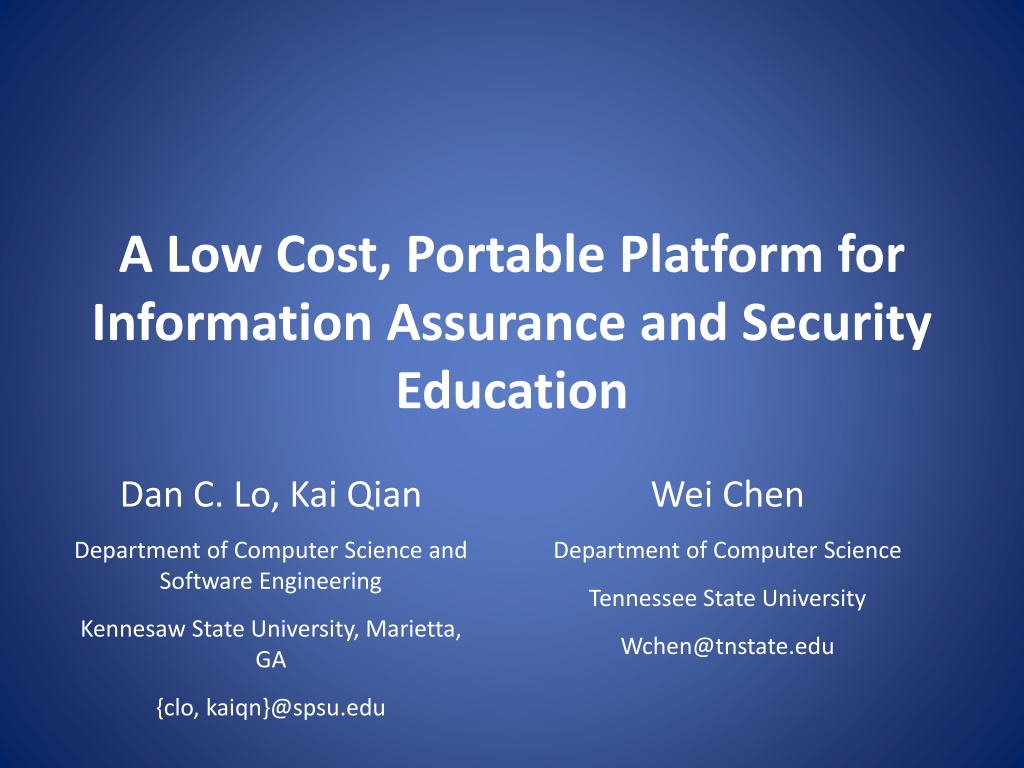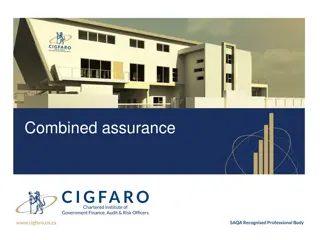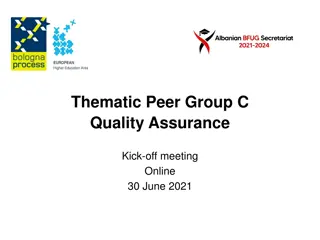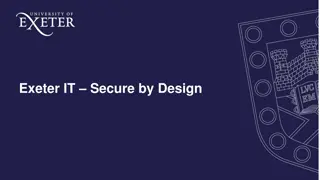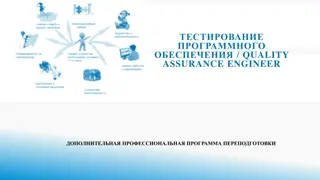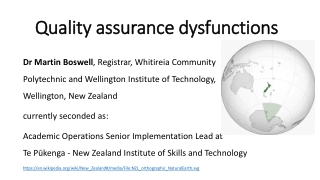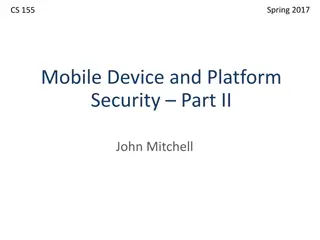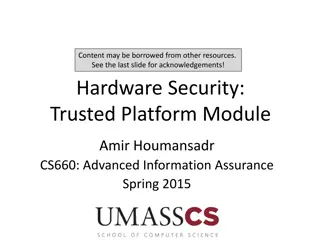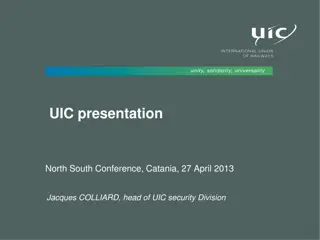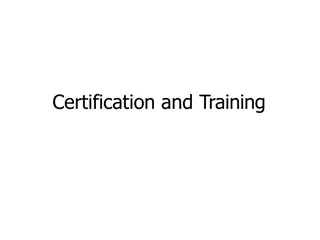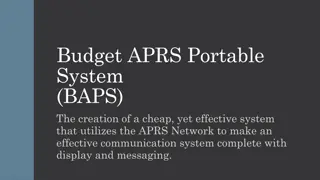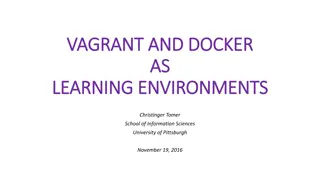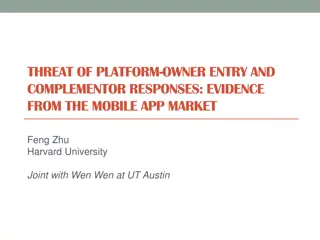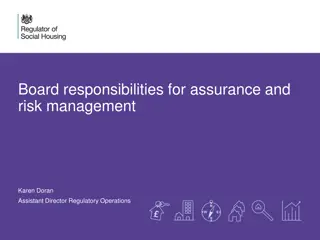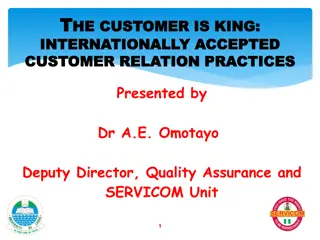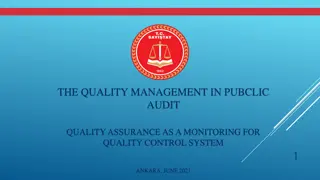A Low-Cost Portable Platform for Information Assurance and Security Education
This research discusses the development of a cost-effective, portable platform for information assurance and security education to address the growing need for hands-on teaching modules in the face of increasing mobile device usage. The platform aims to provide a practical and realistic learning environment by utilizing isolated networks and engaging students through real-world applications. It emphasizes the importance of hands-on learning materials in preparing students for the workforce in the evolving field of mobile security.
Download Presentation

Please find below an Image/Link to download the presentation.
The content on the website is provided AS IS for your information and personal use only. It may not be sold, licensed, or shared on other websites without obtaining consent from the author. Download presentation by click this link. If you encounter any issues during the download, it is possible that the publisher has removed the file from their server.
E N D
Presentation Transcript
A Low Cost, Portable Platform for Information Assurance and Security Education Dan C. Lo, Kai Qian Wei Chen Department of Computer Science and Software Engineering Department of Computer Science Tennessee State University Kennesaw State University, Marietta, GA Wchen@tnstate.edu {clo, kaiqn}@spsu.edu
Motivations Massive growth in mobile devices Security raised to national concerns Lack of mobile application development workforce Hard to maintain a network lab Lack of educational materials, especially hands-on teaching modules High demands in online delivery
Some Figures in Year 2014 A survey in University of Florida shows 98% of students with mobile devices. (1/2014) Worldwide shipments of smart phones will reach 1.9 billion in 2015. Worldwide shipments of tables (300 million) will exceed PCs after 2014. Android 1.9 billion vs. IOS (iPhone OS) 682 million (2014). App downloads will reach 269 billion in 2017. Mobile APP development jobs are best through 2020. Mobile payment transactions to $1 trillion by 2015. SPSU ranked top 7 for the 2015 best colleges for online CS degrees (ComputerScienceOnline.org)
Rationales in our Learning Model Communicate young generations using their language and approach Hands-on learning materials engage students in subjects such as networking and security The best defense is attack. Curriculum with real world applications will better prepare students for the workforce. Portable isolated networking platform
Isolated Network A network that does not connect to Internet. it must keep the isolated information inaccessible to users on the Internet, it must ensure that authorized users can access only the type of information they are authorized to access
Reasons Why Isolated users are prevented from inadvertently releasing sensitive data or vulnerability information to the Internet. users are prohibited to bring in malicious software, such as programs with Trojan horses or other malicious logic. users within the isolated network are prevented from intentionally passing information to the Internet, and prevented from running an attack against an Internet host. training systems can be created in an isolated network that should not be used elsewhere. administrative limitations can be placed on the systems that may not be feasible on departmental machines. isolation of the lab denies external attackers a launch platform from within the department.
How about online courses? High demand in online delivery that requires a low cost learning platform. Also the need to learn anytime anywhere portable.
PLab Setups Reverse Tethering on Rooted Devices (sharing PC internet connection) via a USB Cable Connecting Android Devices to a Laptop Computer Using a Virtual Router PLab Configuration Using USB Tethering PLab Configuration Using WiFi Hotspot
Reverse Tethering on Rooted Devices via a USB Cable
PLab Configuration Using USB Tethering
A Comparison Among Different PLab Configurations Needed Software PLab Configuration Power Consumption Rooted Devices USB Reverse Tethering Reverse tethering tool Low Yes Virtual software router Virtual Router Medium No No if there is one in the device USB Tethering Low No WiFi Hostspot High No No
Labware Design We host labware in a Google site: https://sites.google.com/site/iasoncs Each contains the following: 1 Overview 2 Learning Objectives 3 Ethics 4 Suggested Targeting Courses 5 Activities 5.1 Pre-Lab Activities 5.2 Lab Activities 5.3 Post-Lab Activities 6 Review questions and answers 7 Assignments 8 Projects 9 References
Proposed Learning Modules Network Security Database Security Defensive Programming Web Security Systems Fundamentals
Network Security Internet protocol (IP) IP Spoofing and countermeasures TCP 3-way handshaking protocol, TCP SYN flood attack, Man-in-the-middle attacks and countermeasures Sniffing and traffic redirection (routing) attack with their countermeasures Network intrusion detection and prevention Cryptography (secure/unsecure channels, attackers and their capabilities, encryption, decryption, keys, signatures, cipher types, public key infrastructure, etc.)
Database Security Security challenges for databases Access Control (authentication, verify who you are, and authorization, verify that you have access to something) Data protection with encryption SQL Injection Attack examples Preventing attacks
Web Security Web App security Cross-site scripting Custom Application Scripting HTTP/HTTPS Authentication Cookie Manipulation Frames busting Browser security
Defensive Programming Secure input validation and output handling Buffer overflow attack and prevention Access Control and Confidential Information Injection and Inclusion Accessibility and Extensibility Mutability Serialization and Deserialization
Systems Fundamentals Root of Trusts Secure Application Programming Interfaces Policy Enforcement Engine Memory protection hardware (DEP) Instruction set architecture: privileged instruction and dual mode operation Encryption/decryption hardware Assembly programming
Acknowledgment This material is based in part upon work supported by the National Science Foundation under Grant Numbers 1438858, 1438924, 1244697, and 1241651. Any opinions, findings, and conclusions or recommendations expressed in this material are those of the author(s) and do not necessarily reflect the views of the National Science Foundation.
